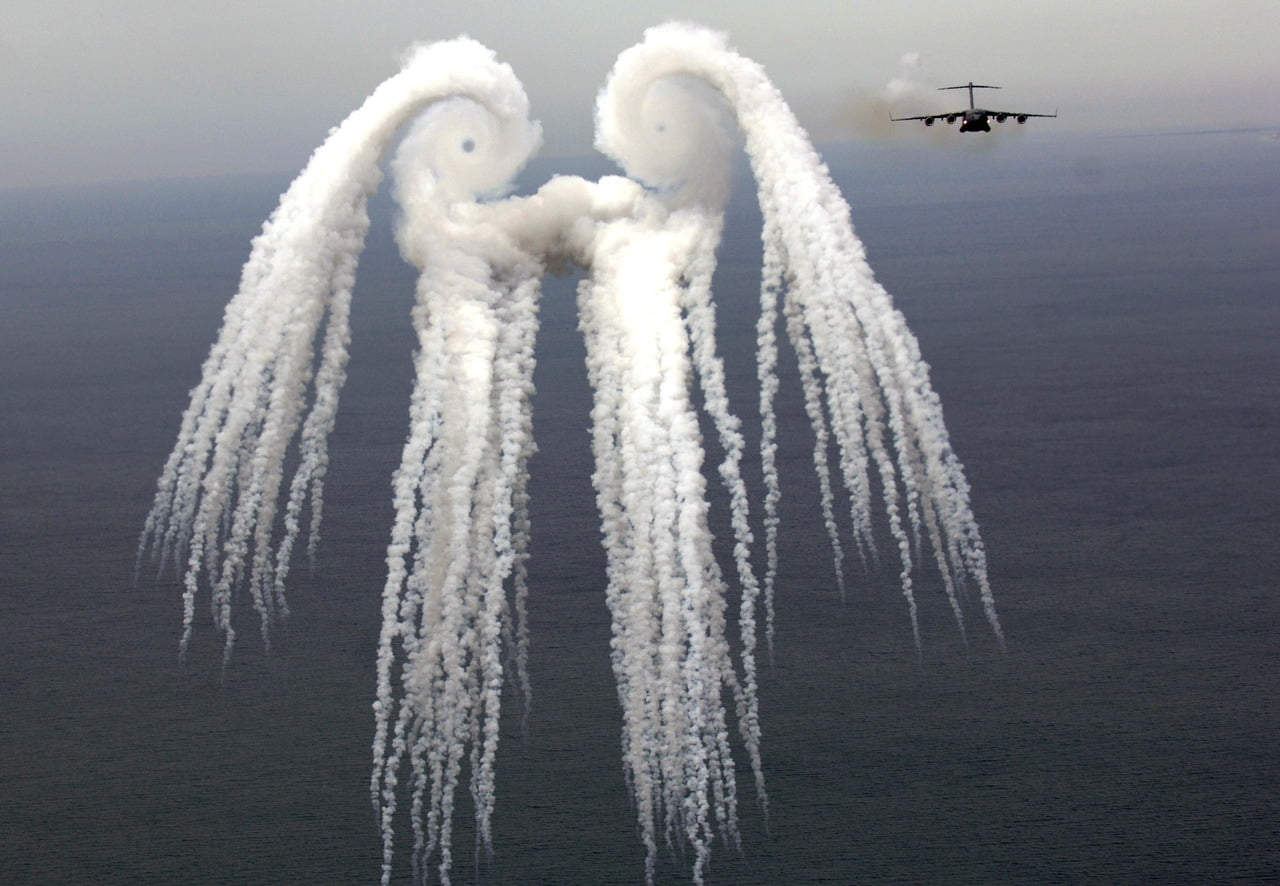Owls are among the most silent hunters in nature, thanks to their feathers. The leading edge of the wing, shown in the bottom part of the photo, has a serrated comb-like edge, which breaks flow over the wing into small vortices, which are quieter than larger ones. The fringe-like trailing edge breaks the flow up further and helps absorb the sound produced by the turbulence. The fluffy feathers along the owl’s body can also help muffle noise. Researchers are investigating ways to use these techniques to quiet aircraft. # (via jshoer)
Search results for: “vortex”

Steam Devils
The formation of the ethereal steam devil is quite similar to the formation of a fire tornado. In this case, the first frost of the season cooled air temperatures substantially below the temperature of the water of the lake, creating conditions for steam and for updrafts of rising, warmer air. A slight breeze across the lake is enough to create pockets of vorticity, which stretch due to the updrafts and intensify due to conservation of angular momentum. This creates the narrow spinning vortex filaments that pull steam up and dance across the lake’s surface. #

Wingtip Vortices in Ground Effect
In this flow visualization, wingtip vortices from an aircraft have been simulated using an apparatus with a couple of flaps that snap together like a book closing. Dye is pooled on the “ground” below the flaps and gets entrained by the vortices and lit up using laser light. The red vortices are the primary vortex generated by the aircraft wingtips and the green ones are secondary vortices generated by interaction with the ground. The lower half of the picture is a reflection off the ground. This photo was part of the 2009 Gallery of Fluid Motion. #

How to Blow Bubble Rings
Next time you’re at the pool, join the dolphins, moss, and volcanoes in blowing vortex rings. Here’s how: first, squeeze your lips like you’re going to give someone a kiss. Second, increase the air pressure in your mouth. Then quickly open and close your lips so a small amount of air pops out. It can require some practice, not even dolphins learn the trick right away. #

Island Vortices
The von Karman vortex street isn’t just found in the wake of cylinders in a lab. Wind moving over islands frequently creates the effect, as in this MODIS Aqua image of the coast of Baja California, Mexico. #

Dolphins Making Bubble Rings
Marine animals know more about fluid dynamics than we might think. Dolphins make games out of blowing vortex rings (a.k.a. bubble rings) and tossing them around. You can try, too, next time you’re at the pool!

Smoke Angel
Smoke from flares released by a C-17 Globemaster III gets caught up by the aircraft’s wingtip vortices, creating a distinctive “smoke angel” shape. #
